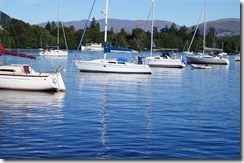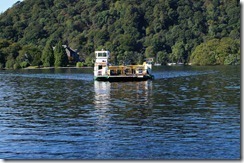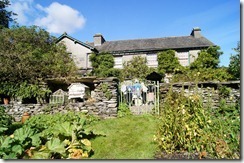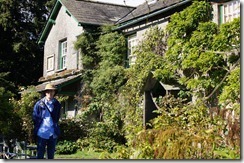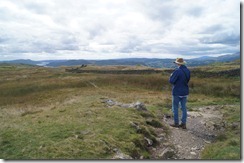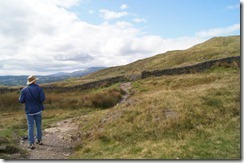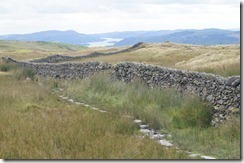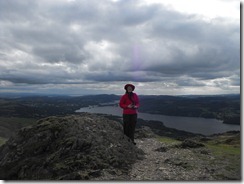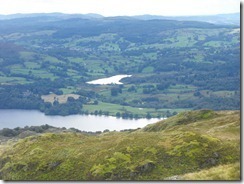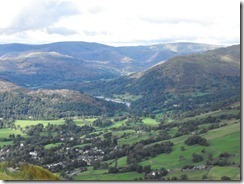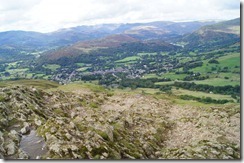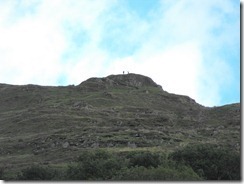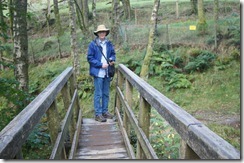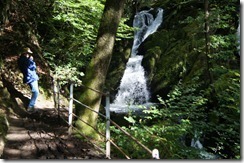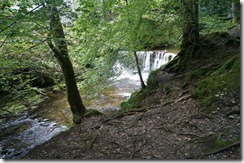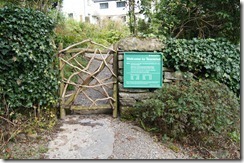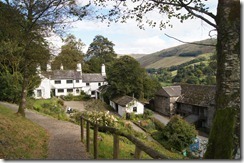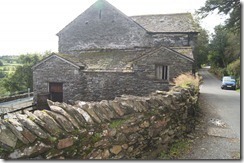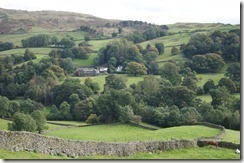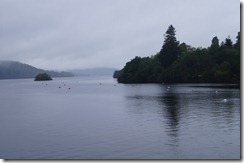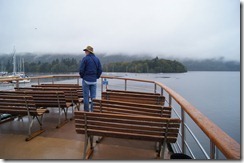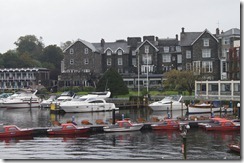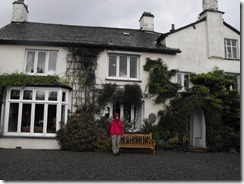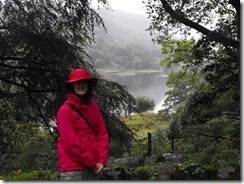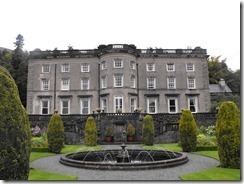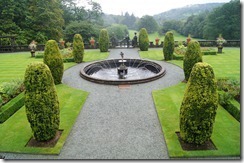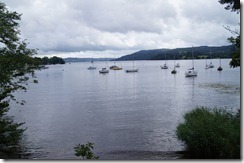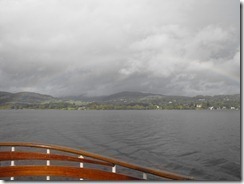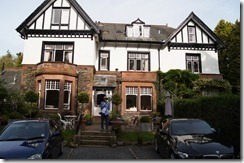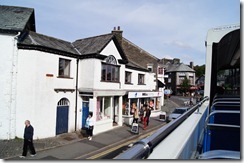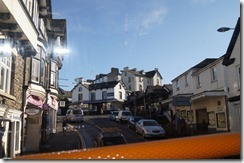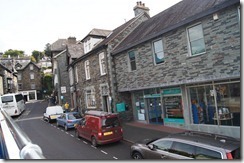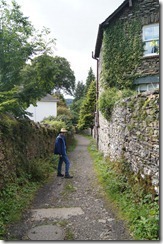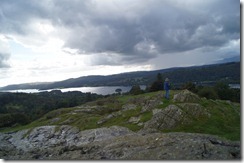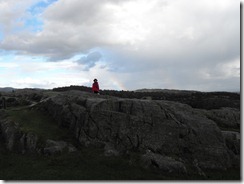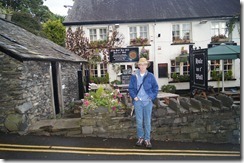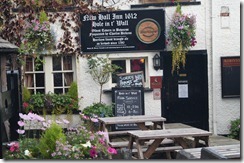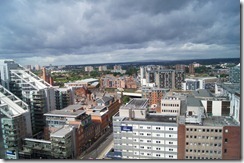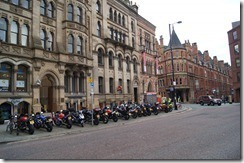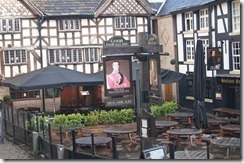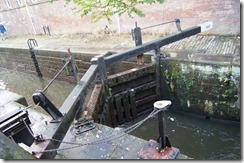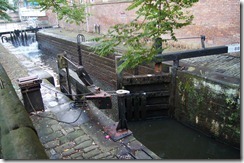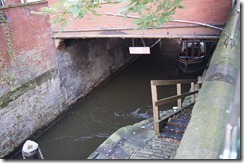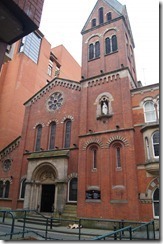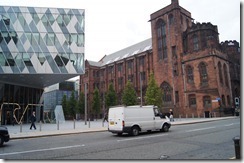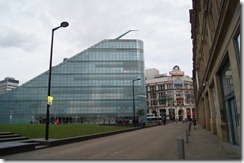Sally MacKenzie's Blog, page 8
October 7, 2012
Hill Top
Hill Top was Beatrix Potter’s house. While I’ve read Beatrix Potter’s books to my sons and we learned on the tour we took that she was quite a force in the Lake District, she’s too “modern” for my Regency interests. However, her house was around in the 17th century. Yippee! Another old farmhouse to explore.
Hill Top is on the western side of Lake Windermere, so we had to take the ferry to get there. We walked down past Bowness pier to Ferry Nab, where the car ferry docks (which also takes pedestrians). While we waited for the ferry, we saw some of the marina.
and some passing swans.
We also watched a couple of the lake boats pass by on their way to and from Lakeside, one of the places we didn’t visit. But the boats that go there are the same ones we took. Here’s the Teal—we sailed on her sister, the Swan.
And I think this is the Tern, which we did ride.
If you’re interested in the lake boats, there’s more information here. Apparently the Tern is from the late 19th century, though retrofitted for the 21st. Still too modern for me!
Here comes the ferry.
Once we arrived at The Ferry House, Far Sawrey, we decided we’d best make a beeline—or as beeline-ish as possible in the Lake District—to Hill Top and save the hiking for later. Hill Top is quite small, so it has timed admissions. I didn’t want to make the trip and then discover we couldn’t get in.
Hill Top is in Near Sawrey, a bit of a hike from Far Sawrey—clearly those naming the Sawreys weren’t measuring from Lake Windermere. (The Hill Top guidebook refers just to “Sawrey.”) But since this isn’t the height of the tourist season, we needn’t have worried about getting into the house. We arrived around noon and only had to wait about ten or fifteen minutes. We spent our waiting time in the garden. Here’s a shot of the house from the garden.
It was hard to get a good picture. Here’s Mr. M, but the part of the house directly behind him is not original, having been added by Ms. Potter. It’s the ivy-covered bit on his left that’s of interest to me.
And here is the more-interesting-to-me front. I try to avoid getting stray people in my pictures, but I wasn’t able to manage that this time.
One of the most interesting—again, to me—things we learned was from a docent on the second floor of the house (the one who confirmed what the Townend docent had told us and who had seen the crank in a bedstand to tighten the rope mattress support). She showed us where rats had gnawed a hole in the floor and showed us the “short board” in the floor that the owners could lift. They’d put a rat terrier into the space between the ceiling and the floor to catch the rats. Cool!
We also saw an interesting square piano—according to the guidebook, by Clementi, circa 1810—as well as any number of household items that my Regency characters might have encountered. For those of you who are Beatrix Potter fans, the docent and the guidebook point to many places in the house and in the surrounding grounds that appear in her book illustrations.
Here’s a video that gives you a peek inside and shows you how they put the house “to bed” for the off season.
After we toured Hill Top, we set off on our hike…our long hike. (Yes, we got lost once again.)
October 5, 2012
Our hike up Wansfell Pike
When we left Townend, the sun was shining, it was only around noon, and we had a map—not as good as an Ordinance map, but a map nonetheless. It was time for Mr. M to finally get his big hike. So we continued up Bridge Lane, intending to scale Wansfell Pike, a climb of about 1500 feet, and head down the other side to Ambleside, Waterhead, and a boat back to Bowness. But I confess I was a little concerned: our map had an ominous message in an orange box and bold lettering: WARNING—Wansfell Pike is high and exposed. In bad weather return to Ambleside by Robin Lane.
We came upon Robin Lane almost immediately, but, as I say, the sun was shining and it seemed like this was our golden opportunity, so we kept going. When we actually found the signpost for “Ambleside via Wansfell” and the turnoff for Nanny Lane as promised on the map, our adventure was clearly ordained. I was very happy that the path looked like a path and not a wide open field. Actually, I think this is still Nanny Lane, which I suspect means vehicles may drive on it.
But then we came to a crossroads. Looking at the map, it’s pretty clear that we were supposed to turn off Nanny Lane. I think there might even have been a signpost. But given our track record of getting lost at every opportunity, I was not about to venture off the more established path without some guarantee. Fortunately another couple was coming down the path we were about to embark on at just that moment. Mr. M. isn’t one to ask directions, but I have no such reservations. I was extremely happy to have confirmation that we were headed in the right direction, and a preview of the hike to come—steep, but manageable. I’ll admit I was extremely envious of the other couple’s hiking poles.
They somehow also knew immediately that we were from the States. I wonder how? 
The path was always easy to discern, though sometimes I was a little appalled at what I saw. The footing was extremely rocky—I had a very good idea where all the stones came from for the houses and the fences we'd seen.
And I was very happy I’d chosen the hiking boots with some ankle support.
But Mr. M and I agreed, after the hike was over, that the approach from Troutbeck was much less daunting than the one from Ambleside.
We kept stopping to take pictures (and I’ll admit I didn’t mind a moment to catch my breath and let my heart stop pounding), but then we’d tell each other that the pictures were sure to be better from the summit. Which they were. Here’s proof I made it to the top.
I think Mr. M might have had his camera settings off a bit—he’d sometimes accidently set the camera to nighttime as he was getting it out of his bag—because I don’t remember it being that dark up there.
Here’s Lake Windermere and I think—after consulting the Ordinance map in the comfort of my home in the States—Blelham Tarn (the little body of water toward the center of the picture).
Here’s Ambleside on the other side of the mountain.
As you can see, the footing going down was rather rocky.
I wasn’t entirely sure I could make it, but I certainly didn’t want to retrace my steps. And I think going down a mountain is always harder than going up—at least when you aren’t doing real mountain climbing. (I’ve never done that—and probably never will.) So the first 10 feet or so, I did pretty much sitting on my rump, stretching my feet out, searching for a solid foothold, and then doing it again. 
This photo doesn’t give you a real sense of the challenge—I was too busy holding onto the mountain to take pictures when I was in the process of easing down to a place I could stand—but here I am pointing back the way we’d come.
And here I am looking down at the folks coming up from Ambleside. Can you see them? There two folks sort of near the wall, one wearing green and the other blue, and farther down the path there are two more, one in red and one in white. The last two I had to really zoom into the picture to make out.
And here’s looking up from the Ambleside—you can see two people up on the summit. That’s where we were!
As we made our way down to Ambleside, we came into a woods, Stock Ghyll Park where we found Stock Gyll Force. You can view the waterfall from a bridge as well use the bridge to cross over the stream.
It had rained recently, and the trail was a bit muddy, but we managed. Here’s Mr. M capturing the waterfall on film…well, I suppose that’s pixels now, isn’t it?
And I was there, too.
I took a bunch of pictures of rushing water and bridges, but perhaps the video here gives you a better idea of the waterfall and park. We didn’t see some of what he mentions, perhaps because we came down from Wansfell Pike, not up from Ambleside. And since it had been very rainy, I’m not sure that all the park was open—you can see behind Mr. M in the bridge picture that some temporary fencing was in place. Below may be the sluices he mentions.
We were very happy to get on the boat at Waterhead and sit down to sail back to Bowness. We think this might be Wansfell Pike—that grassy, rocky peak sticking up above the trees—as seen from Lake Windermere, but we aren’t really sure.
October 4, 2012
Townend
I have to say, Townend was one of my favorite places of all the sites we visited on our trip. We hiked over from Windermere—again along a busy road (A591—part of the same road we walked on to get to Rydal Mount)—to Troutbeck Bridge and then up Bridge Lane. By a great stroke of luck, arrived just in time for the 11 am house tour. The docent was great—I say this because I actually remember a lot of what he said—and I also bought the guide book to help jog my memory.
The Browne family, prosperous farmers and, according to the docent, social climbers to some extent, lived in Townend for over 400 years, and the house and furnishings are very much as they would have been if my Regency characters had stopped by for a visit. Except for the carving on the furniture. Apparently the last George Browne (there were many) was an enthusiastic woodcarver, and he embellished much, if not all, the wood in the house. Sort of horrifying from a historian’s perspective—or even that of a Regency romance writer—but a reminder that the house was indeed a house and not a museum. The carvings are a bit outlandish—our docent said they speculate that George was a fan of National Geographic and got some of his inspiration there. (But I have to say the figures carved in the Elizabethan paneling at Levens Hall reminded me of George’s work.)
Here are a few of the tidbits I retained from our tour:
* We started in the kitchen where the docent told us the Brownes would hang their meat to dry (in a meat loft, according to the guide book). A visitor could glance up and see if the Brownes were having a prosperous year by the amount of meat hanging there.
* The family and servants all ate together at a long table called a board (as in room and board)
* The family were keen readers and had an extensive library with a wide variety of books.
* The servant’s room was quite spacious. There wasn’t a marked class difference between the servants and the family. Many of the Browne children would at one time or another be sent to neighboring homes to work in service to learn needed skills.
* While the room was large, the furniture wasn’t exceedingly fancy. The wardrobe was a repurposed bin from the barn, turned on its side.
* This was before the invention of box springs. Mattresses were placed on rope supports, and the docent showed us how they fastened to the bed frame. With use, over time the ropes would stretch, and folks would sink into their beds. I don't remember if the Townend or the Hilltop docent told us this, but if things got bad enough, one’s posterior would sink deeper and deeper into the sagging ropes so that you couldn’t get out of bed without help. Supposedly this is where the nighttime wish “sleep tight” came from. (The Hilltop docent told us she’d visited an estate where the bed had a compartment you could open. Inside was a crank for tightening the bed ropes.)
* Baby cradles like the one at Townend sometimes had a door in the back which could be opened and a hot brick inserted to warm the cradle.
* The Brownes had been magistrates at one time or the other. One of the bedrooms had a door in the ceiling, and it was up there they would put people accused of crimes until they could be taken to the gaol.
* In times before running water, taking a bath was a major—and infrequent—occurrence. When it was bath night, a wooden or metal tub would be filled with water, and Mr. Browne, as the head of the household, would get in. After he’d bathed, the grime and scum left behind—it might have been weeks or months since his last bath, and he’d been out working on the farm all that time—would be skimmed off and Mrs. Browne would get her turn. And the water would be skimmed again and the oldest child would get in. And so it would go down to the youngest, the baby, who got the last bath before the bathwater was finally disposed of. And, according to Townend docent—and if I remember correctly, confirmed by the Hilltop docent—that’s where the expression “don’t throw the baby out with the bathwater” comes from.
* George built a fake interior staircase that goes nowhere so his house would appear grander than it was.
* Walking through the house, you quickly realize the wooden floors are very uneven. The way the Brownes dealt with the changing floor was to lengthen some of the legs on a desk or bed so the furniture remained level even if the floor wasn’t.
Here’s the barn, which isn’t open to the public. And a side view:
The stacked stone walls were everywhere we went. We learned they last about 300 years.
Here’s a view of the countryside as we made from Townend to Nanny Lane to begin our hike up Wansfell Pike.
October 3, 2012
Day 2—Rydal Mount
I came to the Lake District with a long list of homes to see and a chart showing which places were open when. All except two houses were closed at least one day a week, and a few of the houses (as opposed to the gardens) didn’t open until noon or later. We used this chart to determine the order of our explorations.
Rydal Mount, William Wordsworth’s home from 1813 until his death in 1850, became our first destination. It's in Ambleside, which meant we could get there by taking a cruise on Lake Windermere, one of the activities on every tourist’s must-do list. Here’s a view of the lake from the boat.
And here is Mr. M on the boat. There were at least three different kinds of boats that made the circuit from Bowness to Ambleside and back, and we rode (sailed?) on all three of them at one time or another. (After the novelty wore off, we switched to the bus.)
The boats dock in Waterhead, and you walk up the hill to Ambleside. Here’s a picture of Waterhead.
We stopped at an information center (or I suppose I should say centre  ) and got a map and directions from the helpful young man there. And if you guessed we weren’t able to follow the map or directions, you’d be right! We ended up walking along the main road which was less than desirable. For one thing, the traffic was on the “wrong” side of the street, so you’d have cars coming up behind you when you didn’t expect it. And while the nice young man in the information centre told me the cars drove rather slowly, I have to conclude his definition of “slowly” and mine are vastly different. (Unless we were on a completely different road than the one he was referring to—with our directional issues, that’s always possible.)
) and got a map and directions from the helpful young man there. And if you guessed we weren’t able to follow the map or directions, you’d be right! We ended up walking along the main road which was less than desirable. For one thing, the traffic was on the “wrong” side of the street, so you’d have cars coming up behind you when you didn’t expect it. And while the nice young man in the information centre told me the cars drove rather slowly, I have to conclude his definition of “slowly” and mine are vastly different. (Unless we were on a completely different road than the one he was referring to—with our directional issues, that’s always possible.)
The other problem with walking along the road was that the sidewalk (or pavement as the Brits seem to call it) kept switching sides, so we had to switch sides, too. But we kept looking the wrong direction—that driving on the left thing—when crossing the street, so it took a real team effort and some panicked arm-grabbing to insure one or the other of us wasn’t flattened by a car.
And did I mention it was raining? But you probably already guessed that.
We persevered and successfully made it to Rydal Mount. Here I am in front of the house to prove it.
Parts of the house date from the 16th century with an addition in 1750, so I was very interested in the house itself, though of course it is much smaller than the houses my heroes inhabit  . (But I may have to introduce a cottage into one of my books, now that I’ve toured a few.)
. (But I may have to introduce a cottage into one of my books, now that I’ve toured a few.)
The gardens were lovely, but the docent warned us that the paths might be slippery and told us we were welcome to come back the next day, if the weather was better, and they would let us in at no cost. But Mr. M and I had places to be the next day, so we took our changes and trod carefully. Here’s a picture of me with Rydal Water in the background. They call the smaller lakes “water.” According to the Rydal Mount brochure, Lake Windermere is the largest lake in the Lake District, and Rydal Water, the smallest. Both are visible from the house.
As to my “glamorous” appearance, above... No one would ever call me a fashionista, but I would like to say that I normally would not pair a red hat (and red purse, which you—blessedly—can’t see in this shot) with a “berry” raincoat, but I forgot about the red hat—which was the only color available when I needed it (ditto for the purse)—when I bought the raincoat. The contrast will be more painful in the photos where the sun is actually shining.
After we left Rydal Mount, we went back down the hill and stopped at Rydal Hall, which the man we paid our admissions to at Rydal Mount had told me was a Georgian building.
The building isn’t open to the public, but the gardens and grounds are. The gardens are early 20th century, but I think you could pretend otherwise.
After wandering around Rydal Hall, we headed back…and made an almost fatal error. We’d seen one of those “public footpath” signs on our way, and, sadly, we are apparently slow learners. We wanted to get away from the rushing cars and darting from one side of the road to the other, so we opened the gate and went into the field. In retrospect, I believe Mr. M had suggested we follow some walkers who’d left the road earlier, but I thought if we did, we’d end up on the wrong side of the river (which I figured out later was the River Rothay).
So here we were, facing an unmarked field, no signs of a path in view. Studying the Ordinance Map now, I think perhaps we were supposed to cross the field at a diagonal and then we might have encountered some stepping stones on which to cross the river. Which sounds like a Very Bad Idea anyway. And with all the rain, the stepping stones, if there were any, might have been submerged. So we bumbled along through one field after another, hoping we weren’t doing any damage and, if the field owner came upon us, praying he’d take pity on the poor, demented Americans. We had to ford a small stream, and then we followed the river, looking longingly across it at the path we were supposed to be on. I was afraid we’d come to the end of our trek and find ourselves stuck, blocked by a barbed wire fence or rushing water, and have to retrace our steps.
But, mirable dictu!, we came upon a gate at last that let us onto a paved path from which we could find our way back to Waterhead.
We even had a rainbow to look at on our sail back to Bowness.
October 2, 2012
The Lake District—Our First Day
We successfully navigated PIccadilly station and got on the correct train—and the correct part of the train, as it divided up the line and if we hadn’t sat in the back three cars, we would have ended up somewhere besides Windermere. Mr. M had paid for reserved seats, having learned his lesson on our trip to Bath (or perhaps it was Brighton) two years ago. As it turned out, seat reservations weren’t necessary on the trip up, but we were very happy to have them on the trip back as the train was very full. (Partly with people who’d gotten confused and hopped on the wrong train.)
Why the Lake District? It was actually Mr. M’s idea. He was a college English major and had wanted to stop by and see Wordsworth’s haunts when he was passing through England after his stint in the Peace Corps, but had been afraid he to show up with no hotel reservation. (I was an English major, too, but I confess I didn’t take that much of an interest in Wordsworth and the rest of the Romantic poets until I started writing Regencies.) Since what he most wanted to do was hike, he figured we should go while we were still relatively spry  .
.
I wanted to hike, too, but once I started researching the area, I quickly amassed a list of historic homes to visit. A rather long list. I’ll confess I was a little concerned Mr. M would get a tad cranky if I dragged him all over looking at spoons and teapots and doorknobs. But I needn’t have worried. One of our first stops was a tourist information center where it quickly became apparent that my list was far too ambitious. We discovered that unless you were willing to drive—which we most definitely weren’t—it wasn’t that easy to get around. There were buses, but fewer in the off season—September 3 was the magic date this year—and trains, but it looked as if some of my desired destinations would just take too long to get to. So I had to regretfully cross Mirehouse and Dalemain off my list. But I still had plenty of places to see—and I found a book of the Lake District historic homes that I’m planning to order.
We made our base of operations Bowness, staying at Dene House, a lovely bed and breakfast conveniently located to the pier, shops, and restaurants. Here’s Mr. M standing out front. Breakfast came with our stay, and I think Mr. M was the only one who regularly ordered the full English breakfast—fried egg, English bacon, sausage, grilled tomato, mushrooms, baked beans, and black pudding. (Black pudding was the item most avoided.)
Here are some some shots I took of Bowness and Windermere on one of our bus rides. The first was taken from the top—open—deck on a double decker bus. As we drove along, I noticed the trees had been trimmed so the bus could pass by—the lower branches were shorter, and the upper branches stuck out over the bus so the trees had a sort of scooped out look. One of the bus drivers told me later that the buses themselves did the “trimming.”
In this next picture, I was sitting in the front seat on the top of the bus—that’s why there’s the yellow/orange bar. This time we went for a little warmth and the enclosed area. The Lakes were much chillier than we were used to. I think the temperature was 70 or 80 degrees F when we left DC; it was around 50 F in the Lakes. We wore every layer we had.
Another shot from the open top.
We managed to get a couple of hikes in the first day—and we started off as we seemed to go on, by getting lost. It took two helpful people to get us on the right path. We definitely should have bought an Ordinance map at the beginning of our trip, rather than as we were leaving the Lakes. Here’s Mr. M at the beginning of the hike.
This trail was in Windermere. It took us to the top of Queen Adelaide’s Hill and gave us our first view of Lake Windermere—and our first encounter with the ever-present sheep.
The rain kept starting and stopping, but we were prepared with raincoats and hats.
Our second scramble was in Bowness on Brant Fell. Many of the “public footpaths” are just a sign pointing you to a field. We couldn’t discern an actual path. We wanted to be good hikers and stay where we were supposed to, but all too often we couldn’t figure out where we were supposed to stay. But we did try not to bother the sheep, not that the sheep looked like they cared who wandered by them.
That’s Lake Windermere. You can probably also tell that the ground was very rocky.
In this last picture you may be able to see a bit of rainbow next to me. I think we must have seen more rainbows on this trip that we’ve seen in our entire lives.
Mr. M was also eager to explore some English pubs and taste the local ales. His first opportunity was at the Hole in the Wall.
Here’s a close up of its sign. As you can see, it’s an historic site, so I was interested, too.
Our first day was a bit gray, so here are a couple pictures we took of Bowness pier on a sunnier day. This is where we caught the boat for Ambleside and the bus for Windermere Station. I think I must have taken these on Wednesday morning. We had sun over the weekend, too, but then the place was jammed with people.
October 1, 2012
The Lake District—Manchester
No, Manchester isn’t in the English Lake District, but it’s the nearest city that we could get a direct flight to from the D.C. area. From there it’s only an hour and a half train ride to Windermere. So I have to confess that Manchester started off as more a means to an end for us than a chosen destination.
One of my goals in any trip to England is to ferret out Regency inspiration, and Manchester seemed too Victorian for my purposes. Plus I couldn’t find a country house to explore nearby. (Since we don’t drive in England, our sightseeing options are limited to those that can be reached by foot or public transportation.) But of course we had a wonderful time exploring once we got there, and I even found a few things of special interest to a Regency writer.
This pub wasn’t called The Old Wellington Inn during the Regency, but it was apparently around then. (See its story here and here.) I’m not sure why we didn’t stop in. It was near our hotel and Mr. M. was quite interested in exploring British pubs. This picture was taken in the morning; it looked pretty busy in the afternoon.
Manchester was known as “Cottonopolis”—and we saw a very interesting demonstration of cotton manufacturing machines at MOSI. And manufacturing often meant canals, so I was on the lookout for such a waterway. We happened to stumble on one just as a couple was trying to get their narrow boat through one of the locks. The man had what looked like a metal wrench—I was trying not to be too much of a Nosy Nelly, so I didn't ask him for details—that he used to move half of the lock’s gate. Here’s a shot of the closed gate. If I remember correctly, he put the wrench on the metal bit that sticking out of the gate arm in the lower left corner of the picture. Hmm. Or maybe it was the metal thing sticking out of the box kind of thing with the chain. Or maybe it was both.
Here’s a picture of the gate half open. You might be able to tell that the water level has gone down, and you can see water spilling over the upper lock.
I was hoping to be able to watch the boat move through the lock, but either it was a very slow process or something wasn’t working right. We gave up and moved along. Here’s a picture of the narrow boat waiting under the bridge.
Some of the other interesting places we visited were St. Mary’s, aka “The Hidden Gem”
and The John Rylands Library where Mr. M discovered a copy of Ackermann’s Repository from 1813 on display. The library is the building on the right.
We also stopped by the Manchester Art Gallery. To be truthful, we were mostly killing time on our last day before flying home. When we went in, I decided to start at the top back and work my way through, thinking the Gallery of Craft and Design sounded vaguely promising. WELL! They had many objects my characters might have used on display: coffeepots, chocolate pots, teapots, snuff boxes, candlesticks…I was in heaven. Poor Mr. M saw the entire gallery while I stayed glued to that one room. I couldn’t take it all in, but it turns out you can search the collection online!!
One museum that we didn’t visit, even though it was very close to our hotel, was the National Football Museum, below…football being soccer over here. It’s the building that looks like it might take flight.
One of the oddest things about Manchester and to some extent the Lake District (or at least the part we visited) was the weather. Mr. M. and I had just stepped out of a Waterstones bookstore—and yes, I spent far more time browsing the English history section than my dear husband could believe—when something seemed to be falling out of the sky. It was very fine, so at first we couldn’t figure out what it was or even if we were imagining things, but we finally realized that even though the sun was shining, it was raining.
July 19, 2012
Alumni article
But a few months ago, a real live freelance journalist came to my house to interview me. I figured I was relatively safe--she was writing an article for my alumni magazine, so chances were good she wouldn't include any of the more inane things I might say.
It was fun; I think we must have spent two or three hours chatting. Click here if you want to read what she wrote.
June 14, 2012
One more blog visit
June 6, 2012
Another blog visit
June 5, 2012
Bedding Lord Ned Releases and the HEA blog
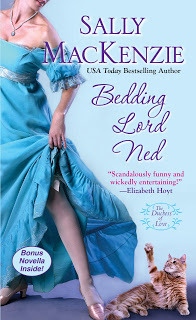
Bedding Lord Ned, the first book in my new Duchess of Love series, comes out today! It's always a little nerve racking when a book debuts. I worry whether people will like it, and whether people will be able to find it at their neighborhood store.
To celebrate Ned's release I'm over at the USA Today Happily Ever After blog. Come find out how I embarrass the men in my life!

